marqueta.org
You can't always apt-get what you want
Infosec - Cycling - Estudiantes
RHCE / RHCSA
Once a sysadmin, always a sysadmin
Day 4: From El Burgo Ranero to El Ganso
May 27, 2024
Around 7:30 in the morning, I leave the Domenico Laffi albergue. I still remember an amazing tomato toast in El Burgo Ranero in 2022, so I head straight to the bar where I got it.
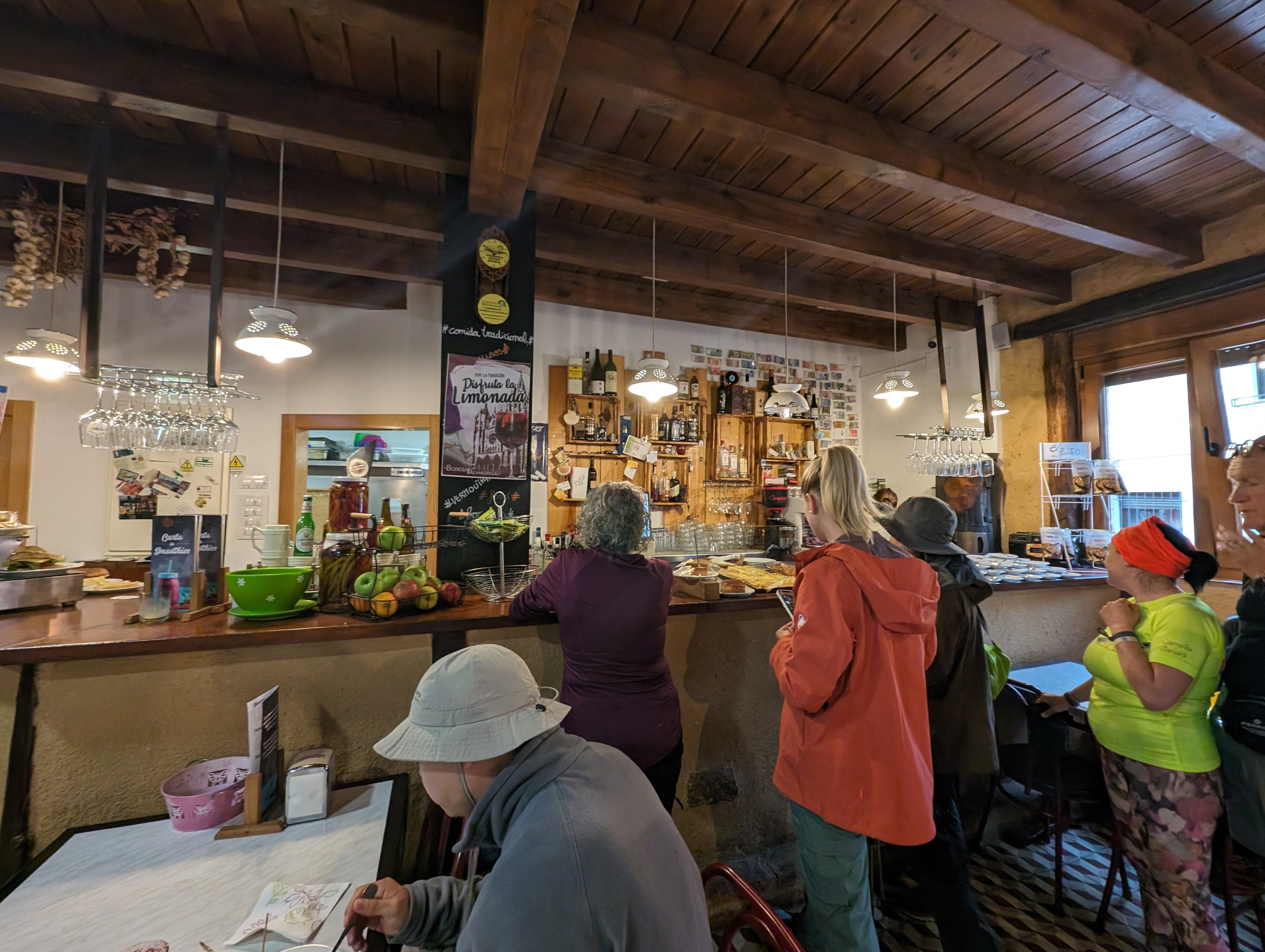
The bar in El Burgo Ranero
The owner is still the same lady; I order the toast (and explain why), and she’s surprised and thrilled that I remember it. So much so that she leaves the bar to tell a neighbor:
— “Can you believe he came back because he remembered he liked the toast so much?”
The three of us chat for a while, and before leaving, she affectionately grabs my arm to wish me Buen Camino and hopes I can come back another year for a toast. Of course, I promise to try (and I mean it sincerely) while I’m amazed at how little it takes to bring a small joy to someone. Silly as it is, I start the day in a very good mood.
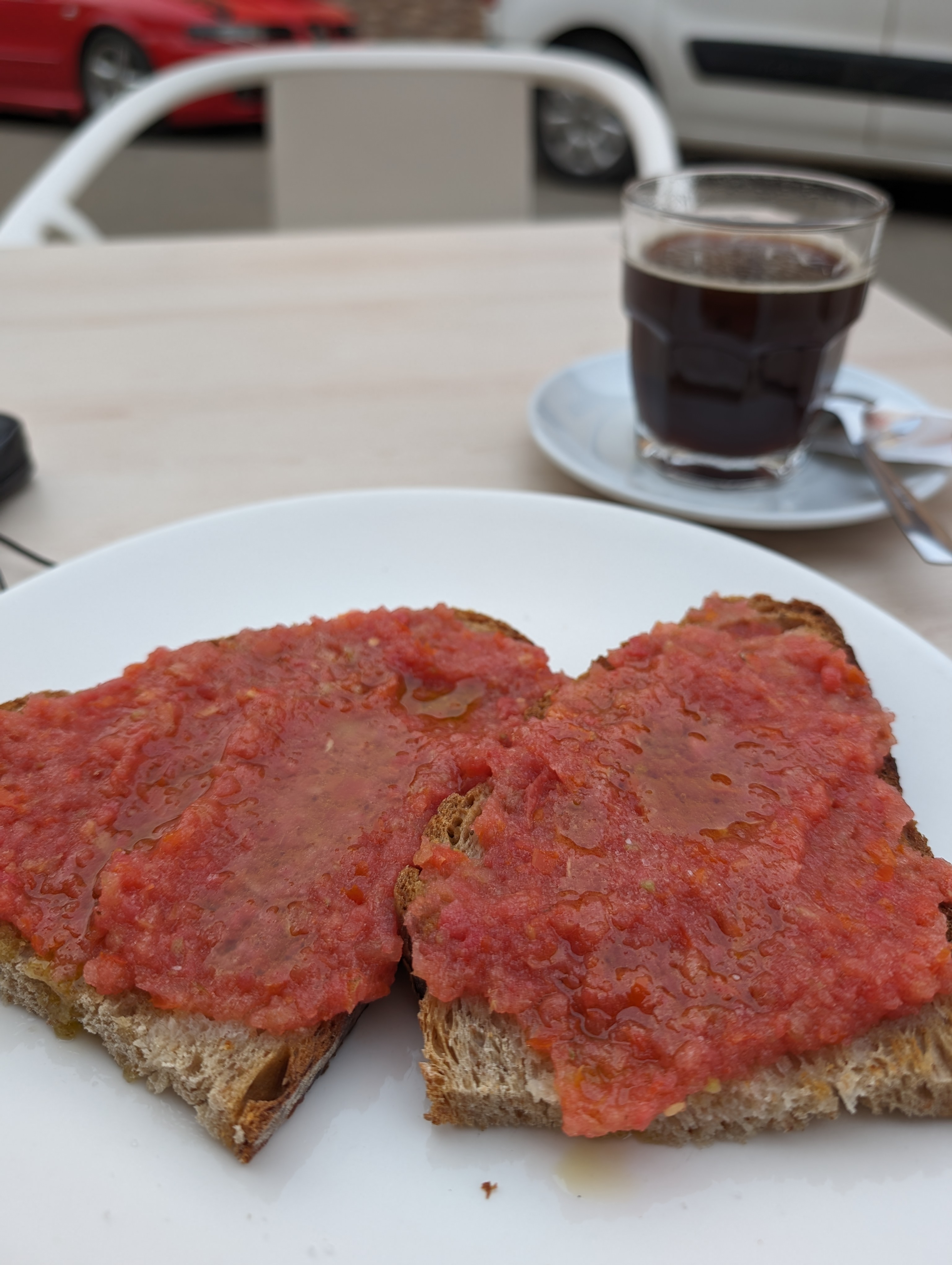
The famous toast
Once again, the morning is cool, and I’m wearing arm warmers, leg warmers and a jacket. Leaving El Burgo Ranero, as in so many other places, the path runs alongside a deserted road. In these cases, it’s clear that the road is my place; the road is also very favorable (slightly downhill), and the first few kilometers fly by. Thus, I pass through Reliegos heading towards Mansilla de las Mulas.
I have a strange memory of Mansilla; a sad, bleak town, as if stuck in another time, in black and white. I remember a photo from my previous trip of an old workshop at the town’s entrance that very much reflects this idea:
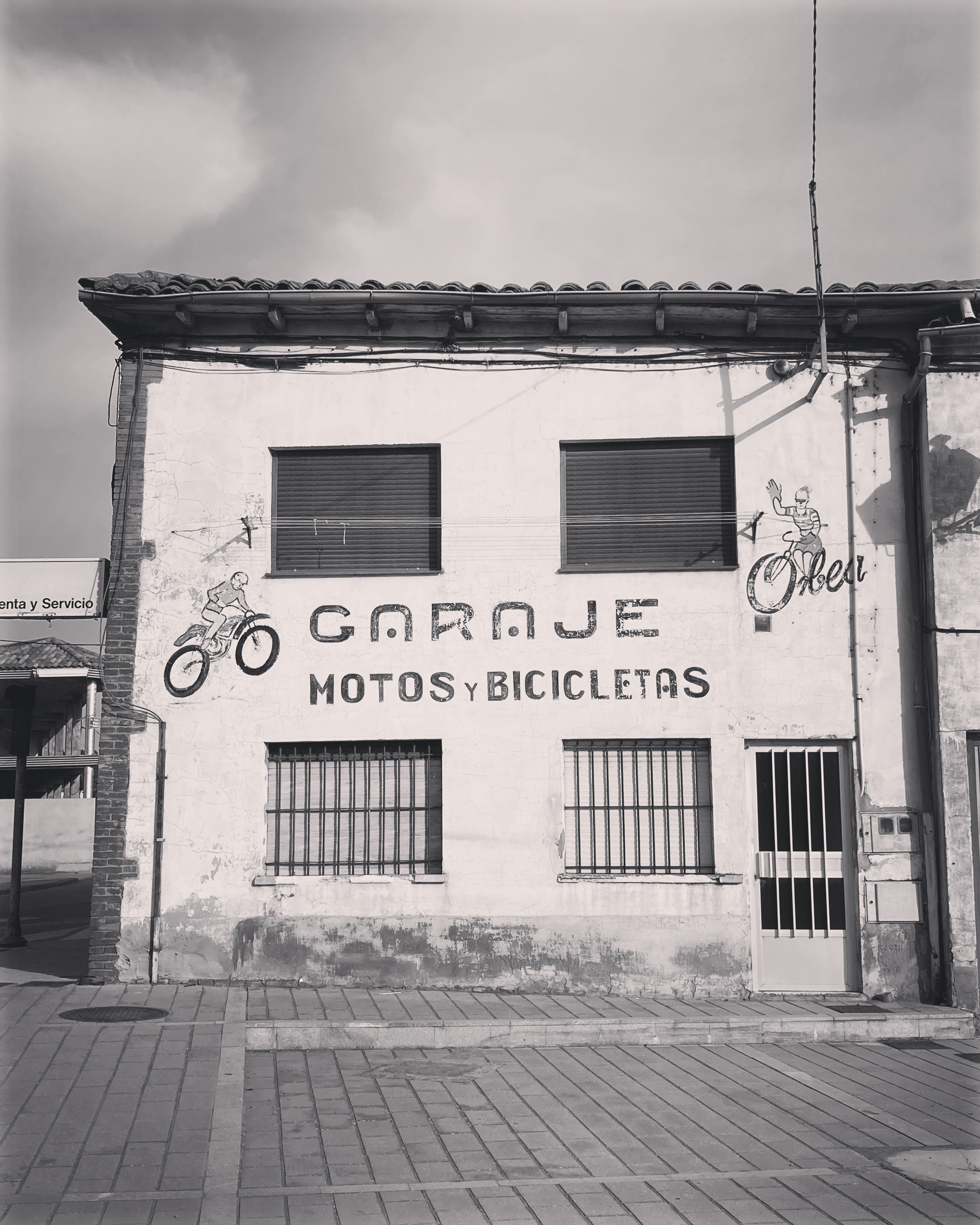
Garage in Mansilla de las Mulas
I’m not sure why, but I was shocked to see that the building is exactly the same. I spend a while wandering the streets of the town, taking a detour around its wall, trying to change that memory; I’m not sure if I succeeded.
I leave Mansilla crossing the Esla river and return to the trail, flat and comfortable for the gravel bike. The next town I come across is Puente Villarente with its large bridge already mentioned by Aymeric Picaud en el Codex Calixtinus.

Puente Villarente
I’m approaching León, and the landscape starts to change, making it clear that I’m entering a more industrialized area. In Valdelafuente, a blue steel walkway helps to avoid the road at the Alto de El Portillo, from where we have a complete view of the capital of León.

León
I enter the city through the Puente Castro neighborhood and stop at a pilgrim assistance station by the Torío River. There, a very friendly Civil Protection guy tells me what to see in León and where to go with the bike. I get my stamp there and continue straight towards the Cathedral.
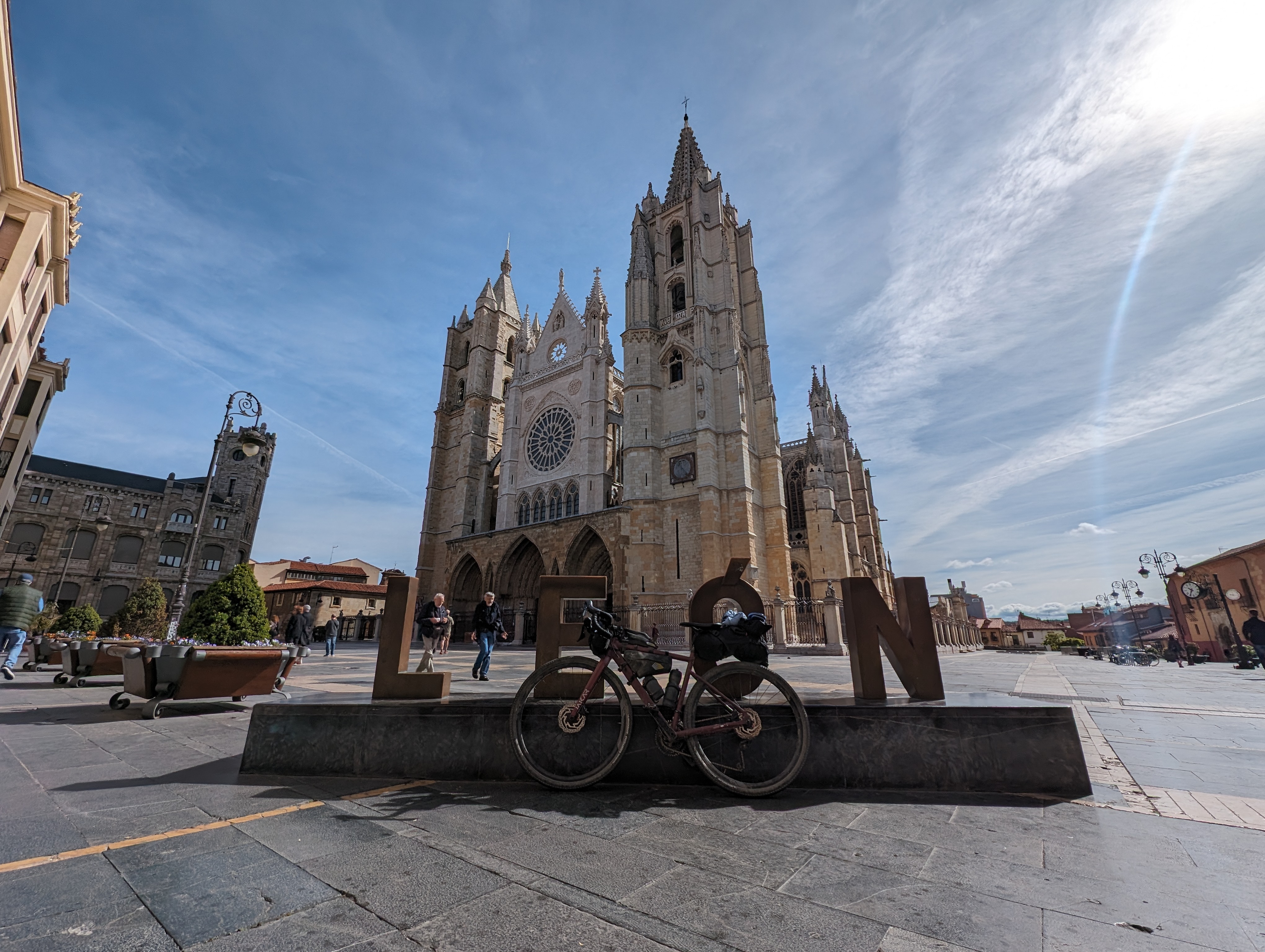
León Cathedral
After taking the mandatory picture, I head to San Marcelo Square where I sit down for lunch. Without much ado, I continue towards San Marcos to cross the Bernesga and leave the city.
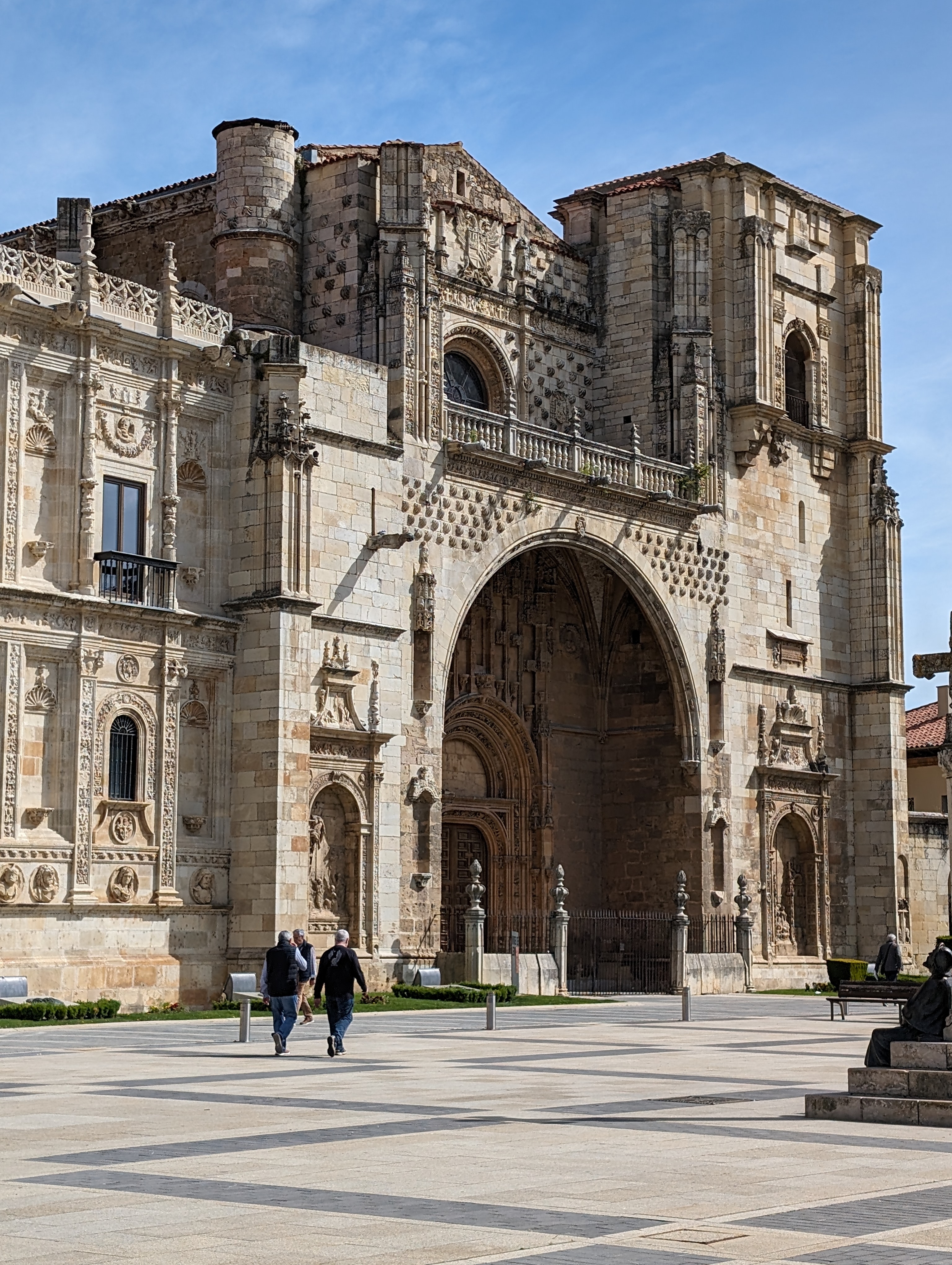
San Marcos
I am aware that one of the ugliest and most unpleasant stretches of the French Way awaits me: the exit from León. In addition to the more industrial landscape, there is not always a path for pilgrims, so sometimes (especially in the crossing of some towns) you have to choose between the sidewalk and the N-120 road, which in this area has quite a bit of traffic.
In any case, it is not too many kilometers, and past Villadangos del Páramo, things return to normal. The uncomfortable part is mainly the crossings of Trobajo del Camino, La Virgen del Camino, Valverde de la Virgen, San Miguel del Camino, Villadangos del Páramo, and maybe San Martín del Camino. That is, the crossings of the towns in an interval of about 10 km, so it’s not that bad.
However, next time I will explore the Villar de Mazarife variant.
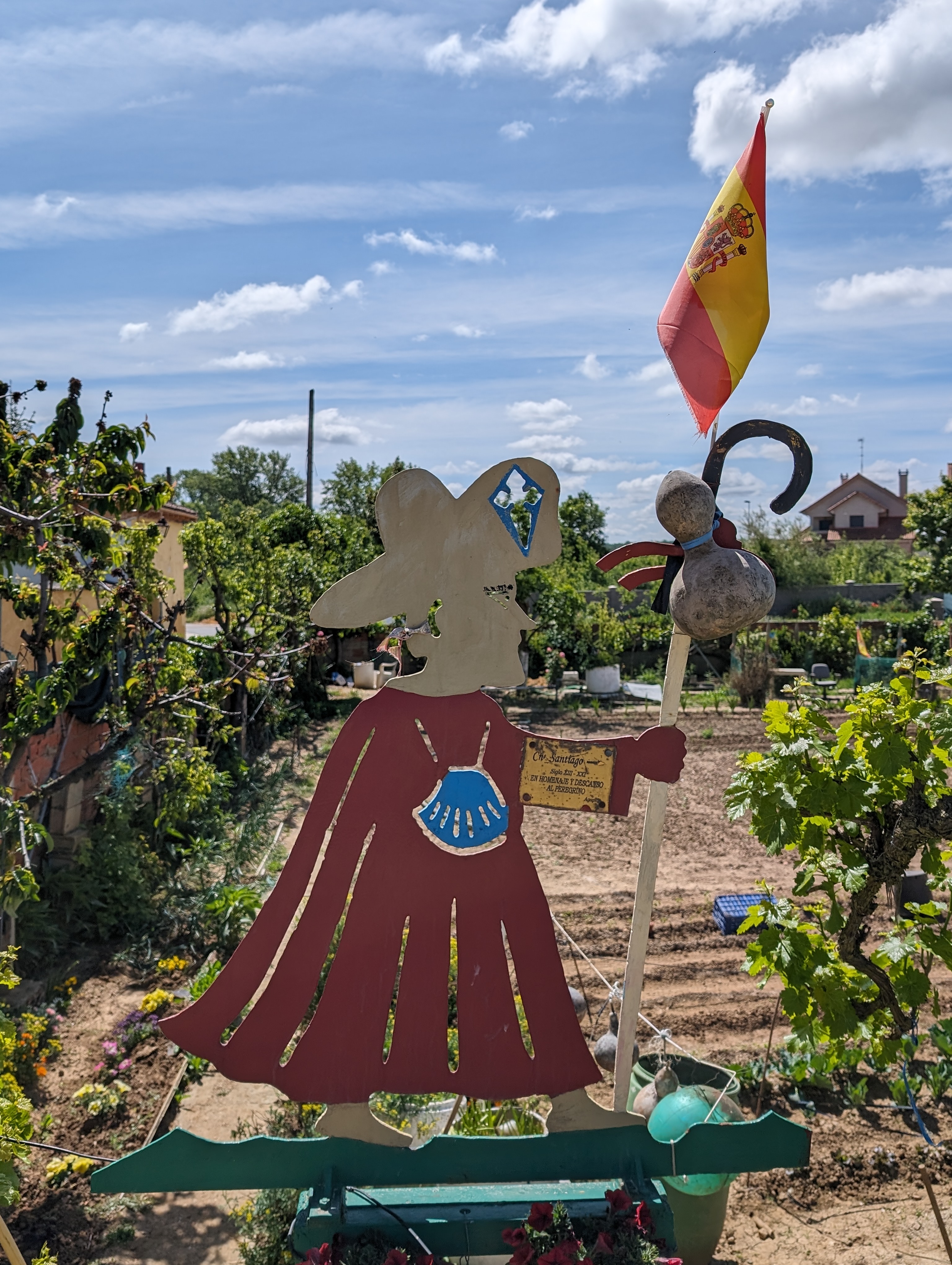
San Miguel del Camino
Shortly after leaving San Martín, I take an excellent track where the gravel bike flies. The section is smooth and comfortable, and in a short time (which feels very short to me) I reach Hospital de Órbigo, at its famous Paso Honroso bridge.
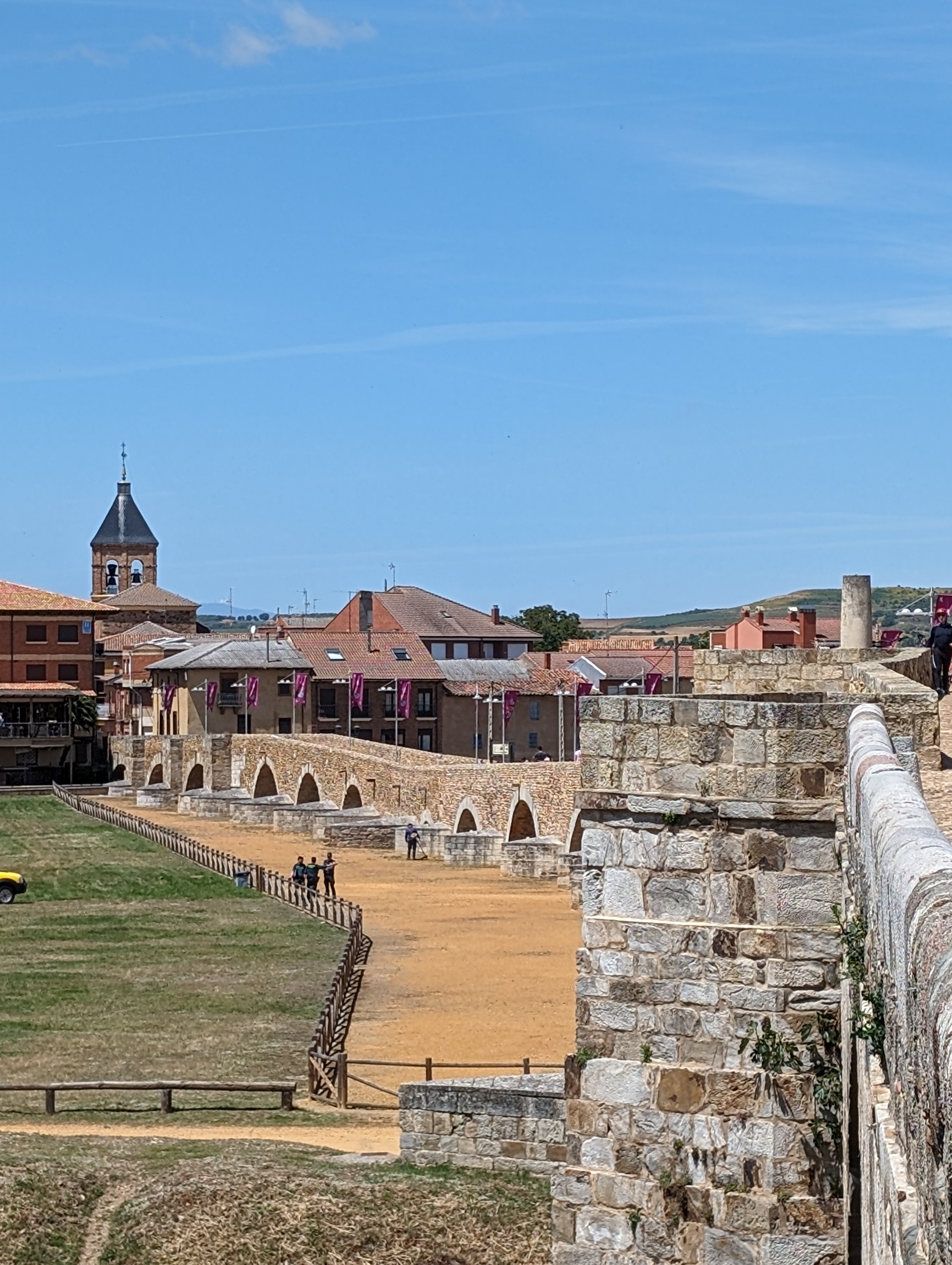
Paso Honroso Bridge
I backtrack a few meters towards the town’s entrance because I saw a bar with an interior terrace and bike parking. I go in, but they only have snacks and I’m finally in the mood for a proper meal, so I cross the bridge and wander around the town. I find the Los Ángeles restaurant where they offer a pilgrim’s menu, and here comes one of the pleasant surprises of the trip:
The lady who serves me at the restaurant suggests storing the bike in a nearby hallway; I enter, and to my surprise, I find a sort of museum. Inside, a very kind gentleman explains that what is there are the personal belongings of his family (mainly his grandparents and his wife’s grandparents). The place is incredible, with old bicycles, a carriage used to fetch wine from Rueda, tomahawks, skis, a room that is a barber shop, an old kitchen, all kinds of objects from the past century (possibly even the previous one)… too many and too diverse to recount in this short blog post.

Museum room in Hospital de Órbigo
I am mesmerized, exploring the many rooms until the lady from the restaurant comes to get me. She wisely suggests that I eat and leave the visit for later. I enjoyed a delicious menu at a reasonable price, and after the meal, I continue my visit to the museum.
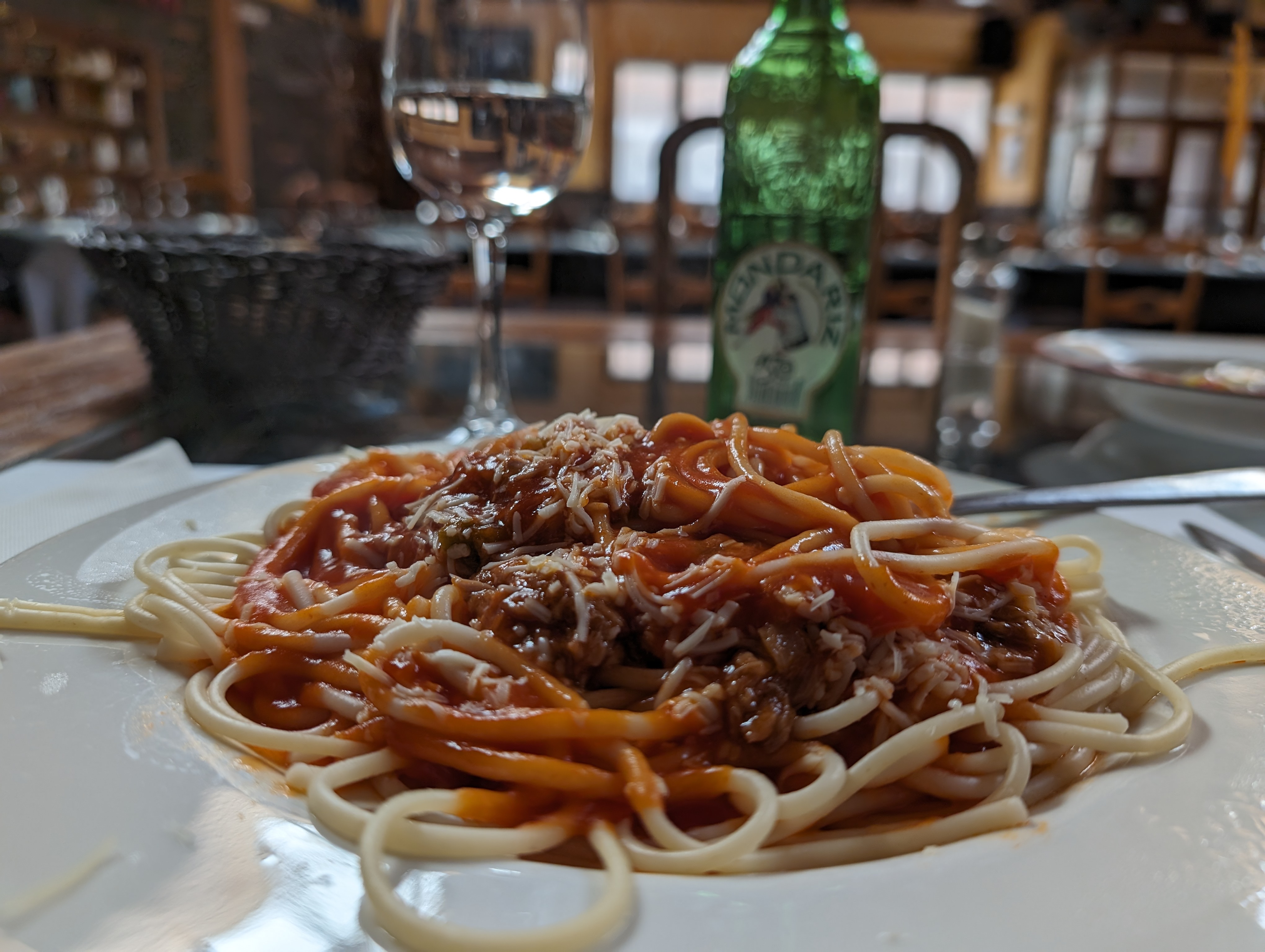
The pasta tasted heavenly
The afternoon was already very hot when I resumed my journey. The route also offered little shade. The trail starts to be uphill as I approach Villares de Órbigo. On the way out, a group of cyclists with gravel bikes overtakes me, and we exchange some complimentary comments about our bikes (as several are of the same brand as mine, Megamo). They have no luggage, so I assume they are local cyclists.
Passing Santibáñez de Valdeiglesias, the climb becomes a bit steeper, and the terrain is a little more uncomfortable. I think I remember having to get off and push a few meters on a ramp with lots of stones, but I’m not entirely sure. I keep occasionally coming across the gravel riders.
Near the highest point of the climb, I find one of those bewildering places that dot the Camino, the pilgrim rest area known until recently as “La Casa de los Dioses” and now as “El Jardín del Alma.”
It is an abandoned warehouse where someone (previously David, now Kevin) maintains a real oasis for pilgrims, where nothing is lacking: drinks, coffee, fruit, chairs, sofas, and even guitars. It is, indeed, a very unique place.
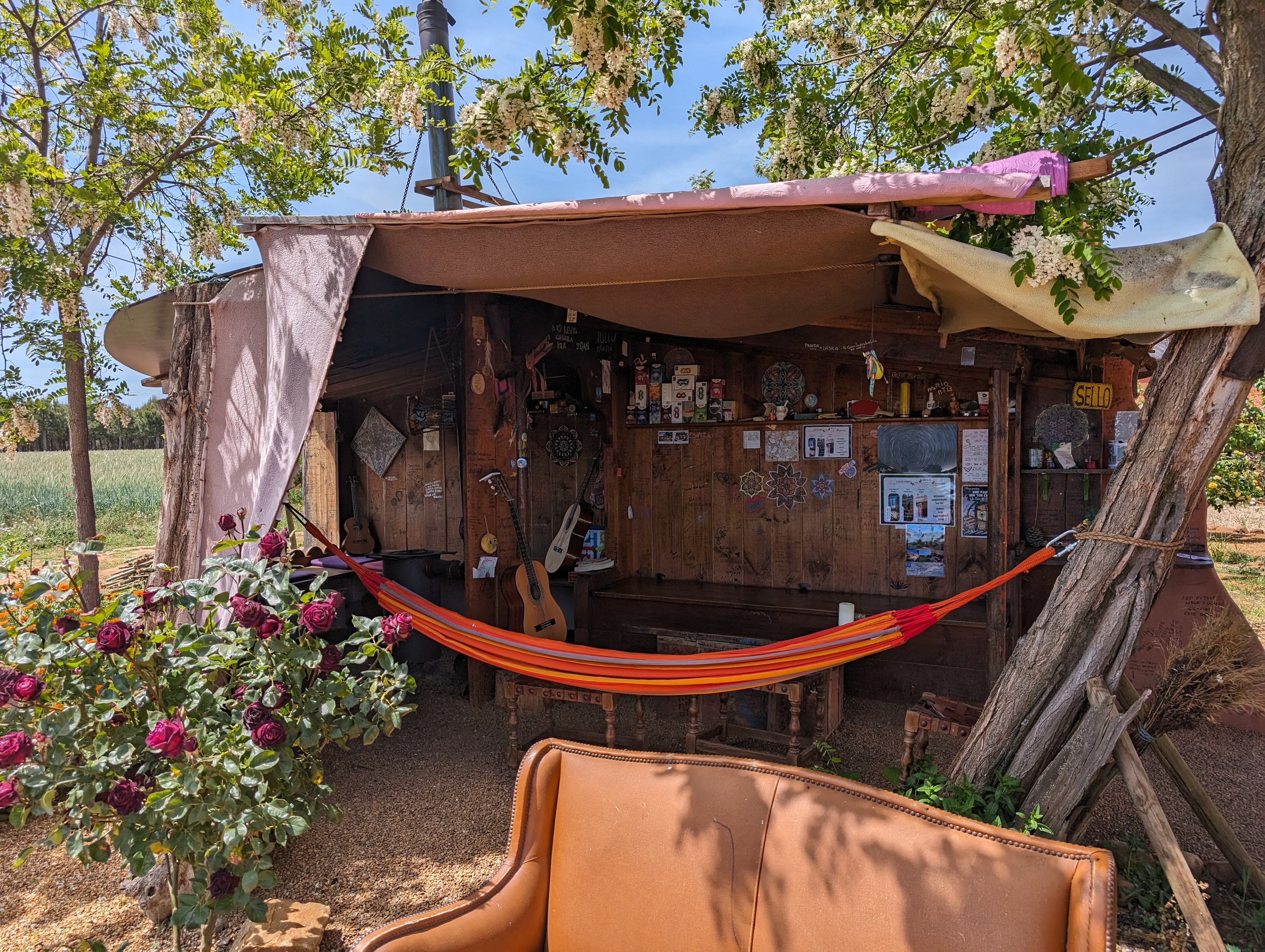
El Jardín del Alma (formerly La Casa de los Dioses)
I take a piece of watermelon (delicious!) and leave a donation in a box. I continue and meet a very young boy traveling by bike with his father. He is English and about 12 years old. I seem to remember he said they started the Camino in León, or was it Burgos? In any case, bravo for the boy! And for his father!
Shortly after, I reach the Santo Toribio cross from where there is a privileged view of Astorga and its surroundings.
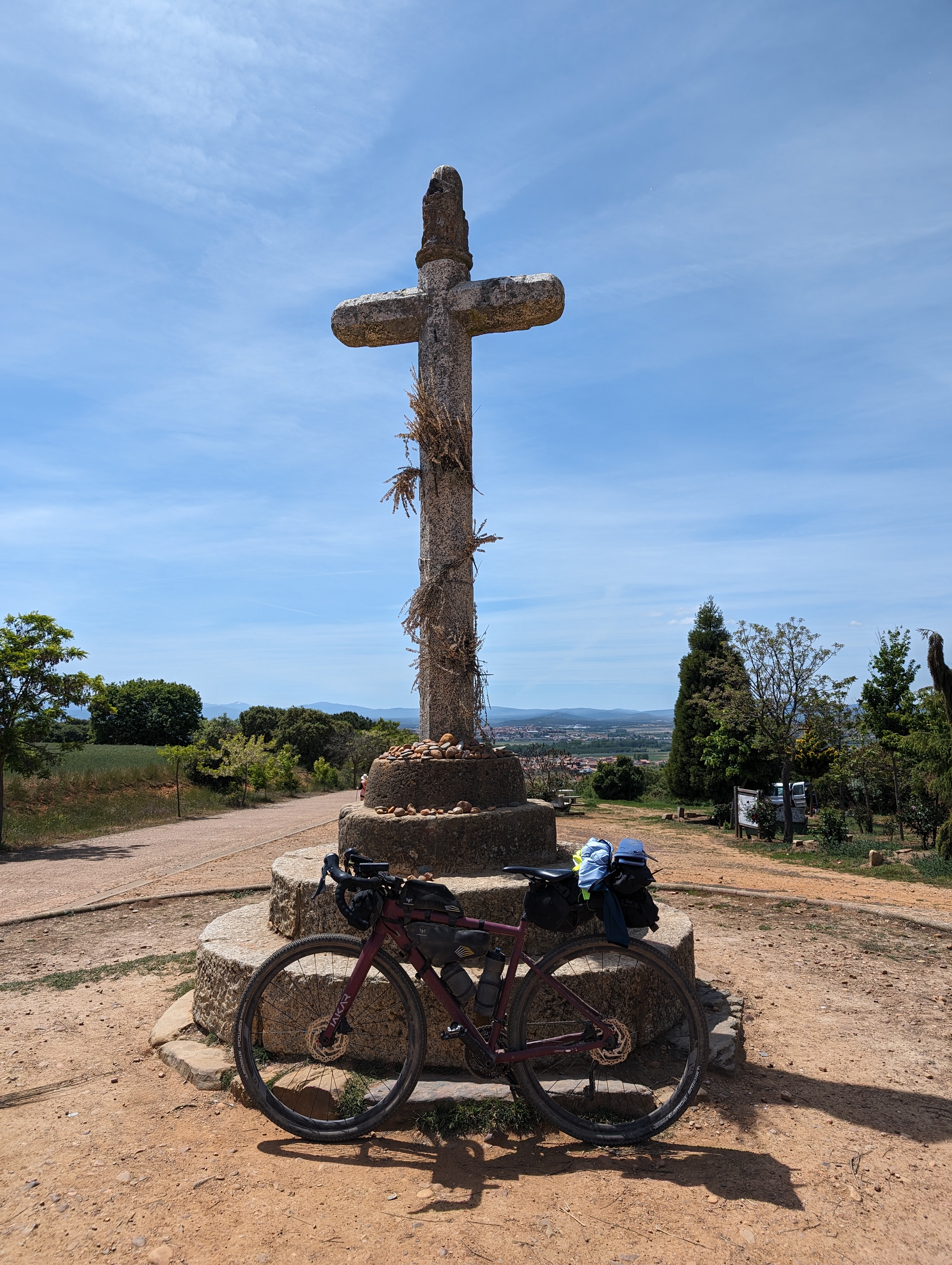
Santo Toribio Cross
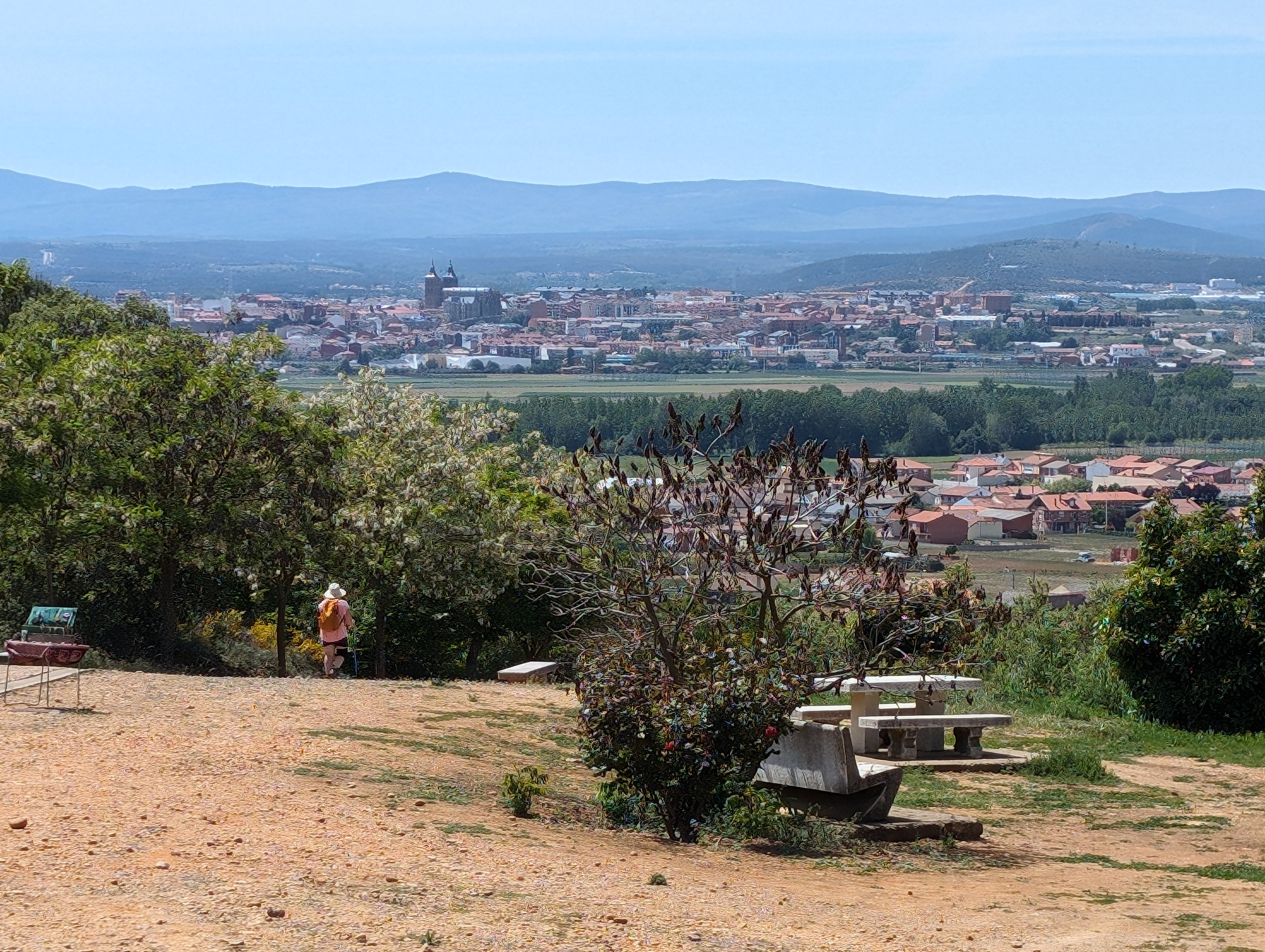
View of Astorga from the Santo Toribio Cross
A quick and easy descent takes me to San Justo de la Vega, very close to Astorga. I cross the railway line via a convoluted walkway. Once in the capital of the Maragatos, I sit in the Plaza Mayor to have a drink and look for accommodation for the night. There, I meet the gravel riders again and realize they are not locals but also “traveling”. I imagine their luggage is carried by some shipping company; everyone has their way of doing things.
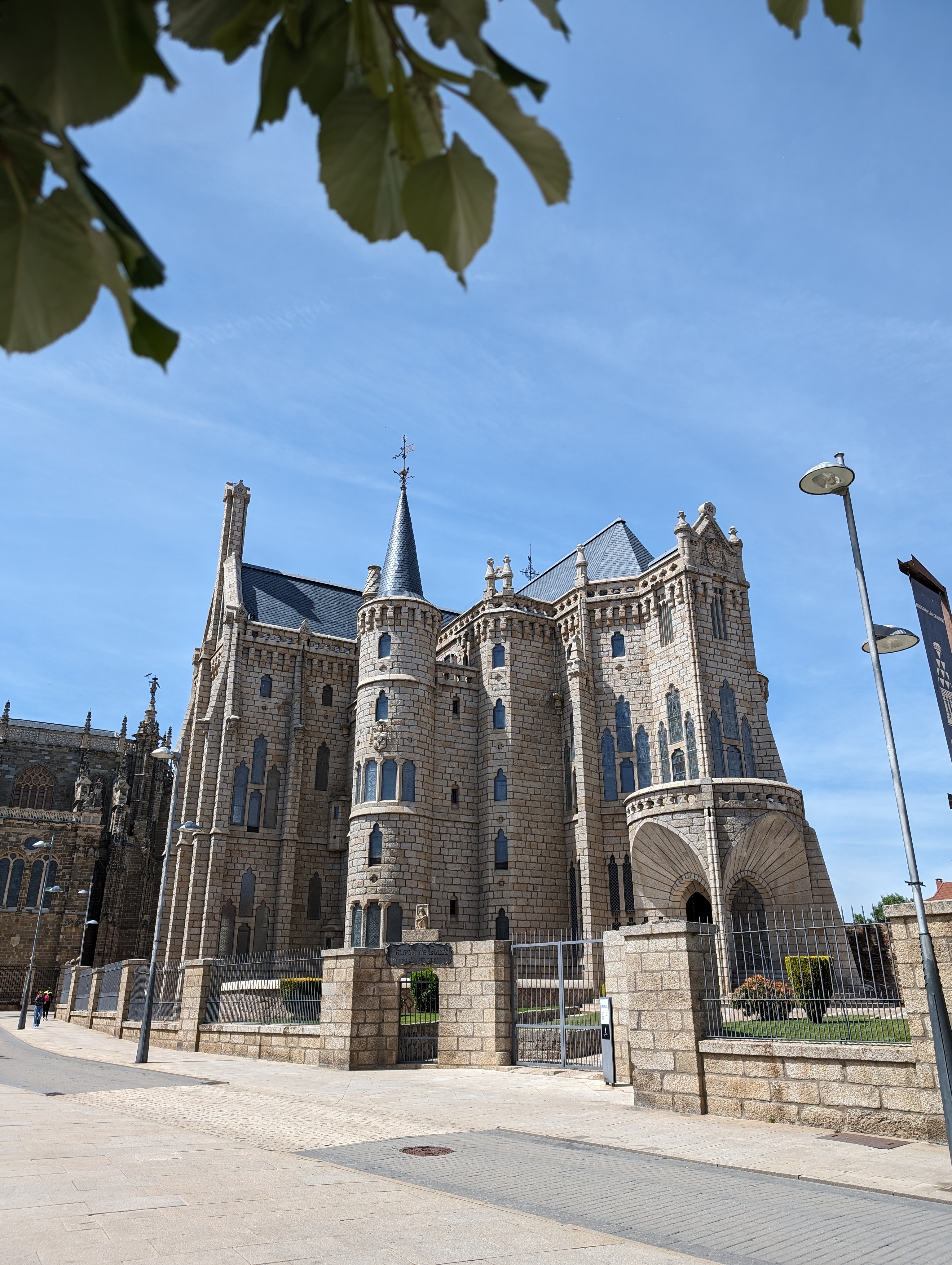
The Episcopal Palace of Astorga
My idea is to leave Astorga and approach the ascent to Cruz de Ferro. I find an albergue in El Ganso and head there. It’s about 15 kilometers of gentle but constant ascent where I alternate between track and road. Along the way, I pass through Murias de Rechivaldo (perhaps the best town name on the entire French Way?) and Santa Catalina de Somoza.
Once in El Ganso, I have no trouble finding Albergue Gabino, right on the road. The place is beautiful! It’s a small, well-maintained albergue with very good taste, where eight of us are staying: a Dutch woman, a lady from Michigan, three French-speaking men, and later, a very young Korean couple who, as usual, keep to themselves and don’t interact much with others.
The first thing I do after parking the bike in the courtyard is take a shower, leave my clothes for washing, and head to the village’s small shop to buy a drink. With all that, I sit in the courtyard with my notebook to write down the day’s impressions while they are fresh. Because later, I have to write a blog!
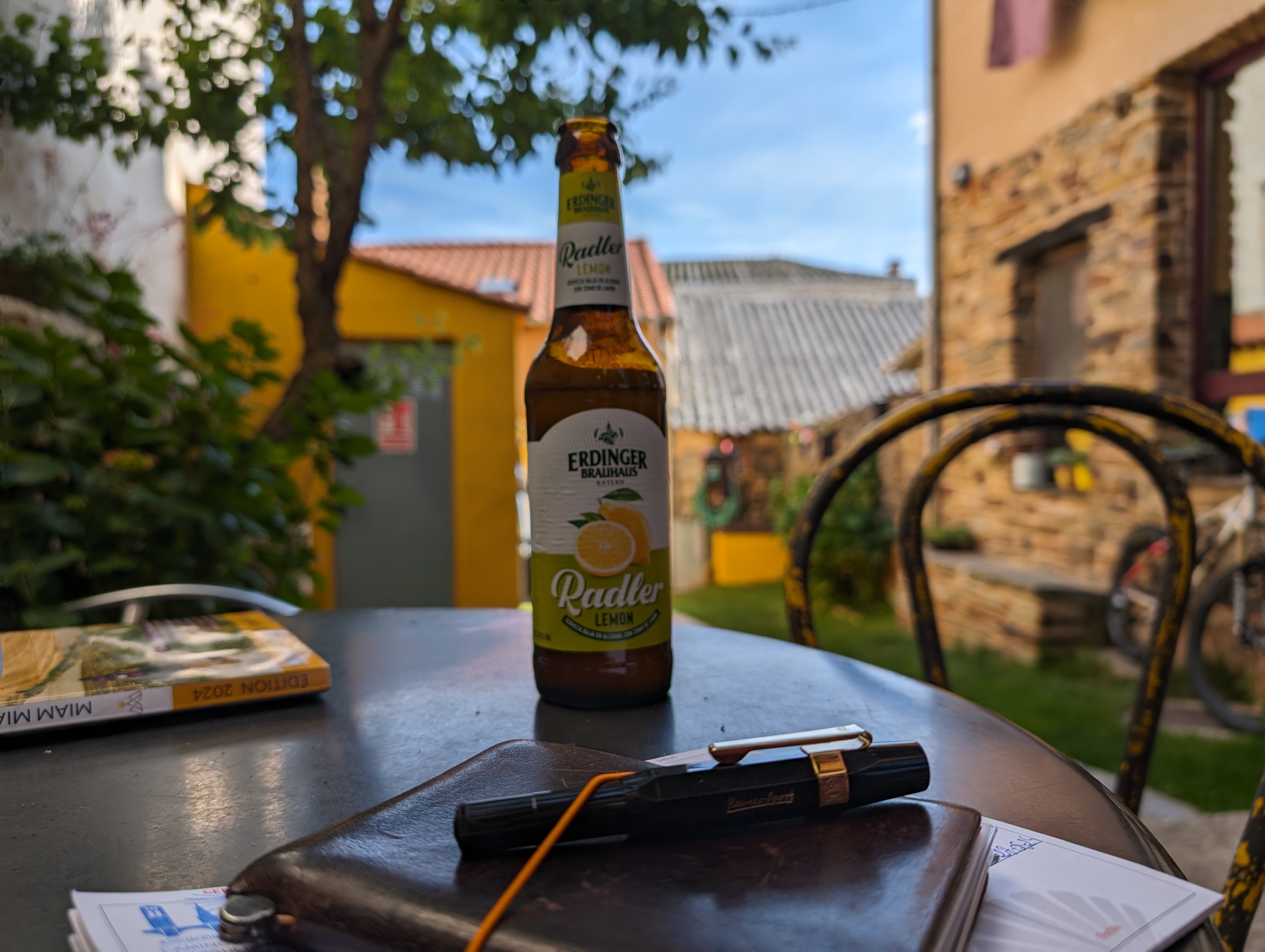
Yes, I had a Radler, so what?
The albergue offers a dinner which I sign up for: a delicious fruit salad and pasta with garlic and oil, very similar to what I make at home and which my kids love. Opposite me sits the woman from Michigan, and next to her, the Dutch woman. The other three men speak in French (with a special mention to a Quebecois who stubbornly refuses to speak English), so after dinner, the two ladies and I go to the courtyard to continue chatting. We have an entertaining time talking about all sorts of things until tiredness overcomes us, and we retire to sleep.
Stage Summary
- Distance: 104 kilometers
- Elevation Gain: 700+ meters
- Time: About 9 hours, including stops
Track
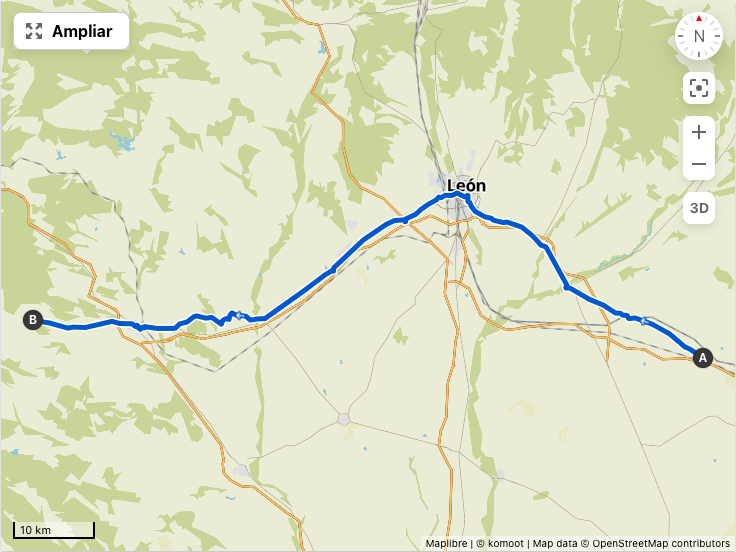
Profile

👈 Day 3: from Fuente Sidres to El Burgo Ranero | Day 5: from Maragatería to Bierzo 👉